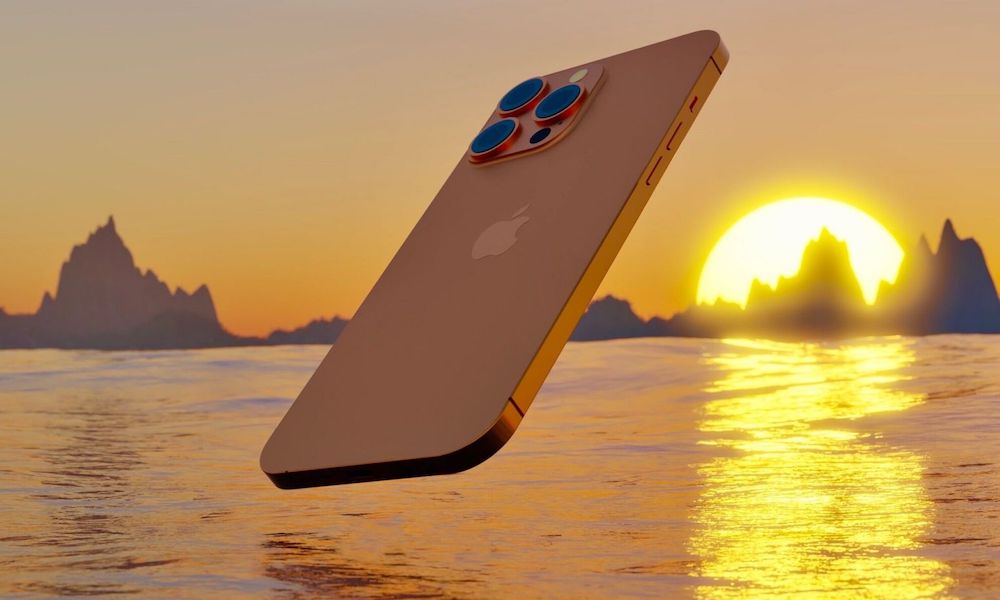‘iPhone 13’ Set to Launch Next Month with Bigger Batteries, Expanded Ultra-Fast mmWave 5G, and More
 Credit: Apple_Tomorrow / Twitter
Credit: Apple_Tomorrow / Twitter
Toggle Dark Mode
Although we don’t have any reason to believe that this year’s new iPhone models will be delayed beyond the usual September release timeframe, Taiwanese research firm TrendForce is adding its voice to the chorus of predictions for the “iPhone 13” lineup.
To be fair, TrendForce isn’t saying much that we don’t already know, but it does corroborate and add weight to several previous reports, both in terms of when we’ll see the “iPhone 13” and some of the features it’s expected to include.
More mmWave 5G
Most notably, the report suggests that Apple is preparing a significantly larger number of mmWave 5G versions of the new iPhone, strongly suggesting that iPhone users outside the U.S. will be able to enjoy the considerably faster cellular technology, which until now has only been available for customers on Verizon and AT&T.
Although we first heard rumours of Apple’s plans to broaden mmWave support back in January, it remains a bit unclear where Apple will be selling the faster 5G versions. Plus, it’s worth keeping in mind that reliable analyst Ming-Chi Kuo predicted in early 2020 that the mmWave iPhone 12 would be coming to at least five countries, yet it ended up confined to those models sold in the U.S.
In fact, this ended up being a break from Apple’s long-standing tradition of selling a single model across North America, although the non-mmWave version of the iPhone sold in Canada, Japan, Puerto Rico, Guam, and the U.S. Virgin Islands still worked fine on every other 4G LTE and 5G frequency — they just lacked support for the much faster mmWave 5G.
Back in June, however, a report from DigiTimes predicted that over 50 percent of this year’s “iPhone 13” models would support the ultrafast mmWave 5G speeds — the first time we saw some firm numbers on this.
Faster A15 Chip, Bigger Batteries
The rest of the info from TrendForce lines up with everything else we’ve heard about the new iPhone, and some of it’s a bit obvious, to be fair. For instance, we know that the “iPhone 13” will use Apple’s newest A15 chip, and that it’s sticking with the 5nm process that it developed with TSMC for last year’s A14. It also doesn’t take a crystal ball to guess that the new A15 chip will be faster and more power-efficient, as that’s pretty much table stakes for improvements in any SoC.
We’ve also been hearing for a while that all this year’s iPhone models will be getting bigger batteries, which TrendForce confirms, adding that Apple has found extra room inside thanks to a new space-saving design that uses flexible printed circuit boards rather than the previous rigid-flex designs.
Storage Capacities: 1TB or Not?
While this latest report says nothing about storage capacities, TrendForce has previously gone against the grain in suggesting that we won’t see a 1TB iPhone Pro model this year.
This contradicts predictions by other analysts and leakers, including Wedbush analyst Daniel Ives and well-known leaker Jon Prosser, who suggested that Apple would offer a higher-end 1TB option, and possibly even double storage capacities across the board.
We originally thought this one could have gone either way, but it started to seem a lot more likely after a recent report by Bloomberg’s Mark Gurman on several big upcoming camera upgrades.
The most significant of these when it comes to the iPhone’s storage capacity is the rumoured addition of ProRes video support, which is going to require a massive amount of storage.
Much like the addition of ProRAW last year, iPhone users won’t be required to shoot in ProRes, but for those who want to, you can expect a minute of 60fps HD video to take up 2.2GB of storage, while 4K/60fps video shot in ProRes 422 will require 9.5GB for a single minute of recording — that works out to 570GB for an hour of video.
Since Apple already has several ProRes codecs, it’s possible it may have developed a lower-bandwidth one exclusively for this year’s iPhone, but no matter which way you slice it, ProRes videos are still going to require massive amounts of storage. If Apple uses an off-the-shelf ProRes codec, it’s likely to go with ProRes 422 LT, but that only reduces file sizes by about 30 percent, so you might get 75 minutes of 4K/60fps video on a 512GB iPhone instead of only 54 minutes.
Regardless of what the storage capacities turn out to be, TrendForce maintains that the new models will be priced the same as their iPhone 12 counterparts, with the 5.4-inch “iPhone 13 mini” starting at $699, and the 6.7-inch “iPhone 13 Pro Max” starting at $1,099.
Since Apple rarely changes its iPhone prices year-over-year, this makes sense, but it does sometimes bump the storage, so it remains an open question whether we’ll see any capacity increases at those price points.
For example, last year’s iPhone 12 Pro and iPhone 12 Pro Max sold for the same prices as the prior iPhone 11 Pro models, yet the base iPhone 12 Pro came with 128GB, versus 64GB the year before. On the other hand, the higher-tier 256GB and 512GB models remained the same as before.
Apart from rumours of the 1TB upgrade, we’ve heard very little about what to expect in terms of storage capacities for this year’s iPhone models. Apple rarely doubles storage capacities across two models in a row, although it’s not unprecedented — the 2016 iPhone 7 bumped the base model to 32GB, and then one year later the iPhone 8 and iPhone X bumped that again to the 64GB, which has mostly remained the baseline capacity ever since.
[The information provided in this article has NOT been confirmed by Apple and may be speculation. Provided details may not be factual. Take all rumors, tech or otherwise, with a grain of salt.]






